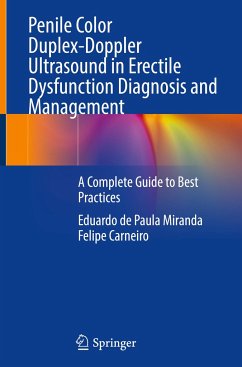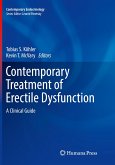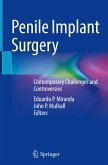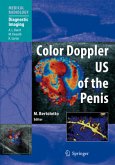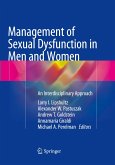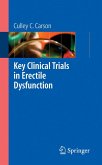Penile Color Duplex-Doppler Ultrasound (PDU) is one of the most important tools available to assess patients with erectile dysfunction (ED), which is a prevalent condition affecting near 50% of men over 50 years of age. Hemodynamic evaluations through PDU have also prognostic value and help choose the best treatment strategy for ED.
Although PDU is an objective diagnostic method, the lack of standardized protocols is one of its main limitations and might lead to great variability in performing and interpreting penile hemodynamic studies in both clinical practice and scientific research. These factors have contributed to the fact that PDU is often considered unreliable, as it may lead to mistaken treatment protocols.
The aim of the present book is to provide a complete guide to performing an adequate hemodynamic study through PDU with pharmaco-induced erection. It will provide a detailed and illustrative overview of the most common pitfalls for a correct conduction ofthis diagnostic procedure. We will also provide an extensive review of the basic principles in erection physiology and pharmacology, allowing a broader understanding of the implications of PDU in clinical practice.
This book will appeal to radiologists and urologists. Its highly informative content will become the ultimate guide not only for fully trained physicians who want to optimize and standardize their procedures, but also for residents and trainees of these specialties. In addition, it will be a useful resource for sexual medicine practitioners, and may reach other specialties and/or healthcare areas such as primary care physicians, gynecologists, psychiatrists and psychologists.
Hinweis: Dieser Artikel kann nur an eine deutsche Lieferadresse ausgeliefert werden.
Although PDU is an objective diagnostic method, the lack of standardized protocols is one of its main limitations and might lead to great variability in performing and interpreting penile hemodynamic studies in both clinical practice and scientific research. These factors have contributed to the fact that PDU is often considered unreliable, as it may lead to mistaken treatment protocols.
The aim of the present book is to provide a complete guide to performing an adequate hemodynamic study through PDU with pharmaco-induced erection. It will provide a detailed and illustrative overview of the most common pitfalls for a correct conduction ofthis diagnostic procedure. We will also provide an extensive review of the basic principles in erection physiology and pharmacology, allowing a broader understanding of the implications of PDU in clinical practice.
This book will appeal to radiologists and urologists. Its highly informative content will become the ultimate guide not only for fully trained physicians who want to optimize and standardize their procedures, but also for residents and trainees of these specialties. In addition, it will be a useful resource for sexual medicine practitioners, and may reach other specialties and/or healthcare areas such as primary care physicians, gynecologists, psychiatrists and psychologists.
Hinweis: Dieser Artikel kann nur an eine deutsche Lieferadresse ausgeliefert werden.

